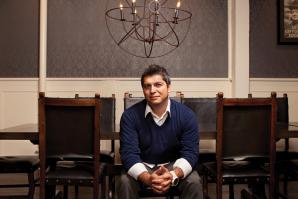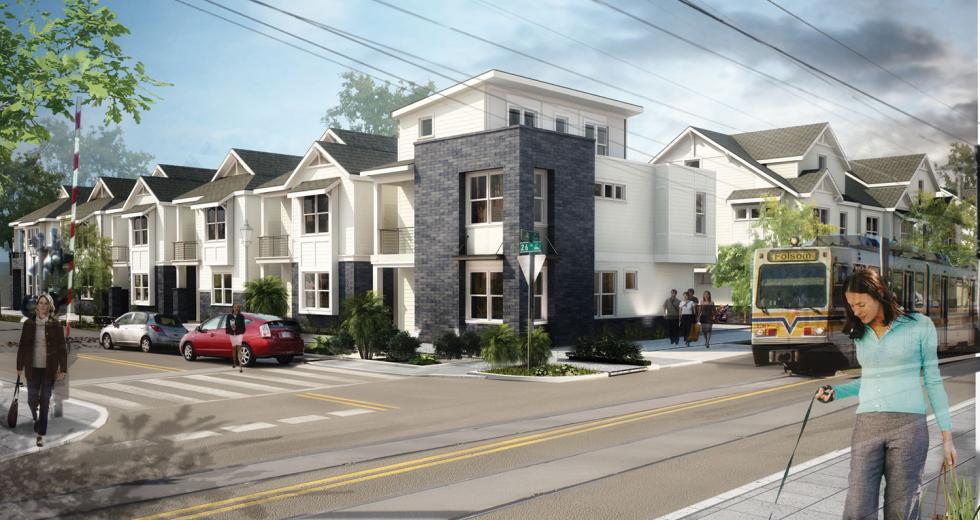Although the concept of sustainable building isn’t new, affordable sustainable building has been slow to market. Historically, products, materials and expertise were in short supply and building green was cost prohibitive, particularly in residential development. That’s beginning to change.
“I think we’ve reached a point where we’re finding that sustainable development is becoming a best practice,” says Bob Chase, an architect and consultant to Build It Green, an Oakland-based nonprofit focused on residential development. “Manufacturers have been catching on to the benefits and growing public demand for these kinds of projects. It has become easier and more affordable to build them.”
The modern concept goes beyond the use of green products and materials, however. As two pending projects in Sacramento illustrate, today’s sustainable development considers everything from how building materials arrive to the site to waste recycling, electricity, water conservation and reuse of rainwater.
The Gateway on Fremont Park is a proposed five-story project on the corner of 16th and P streets in midtown Sacramento. The 50,000-square-foot project calls for 30 one- and two-bedroom condos above street-level retail. The developer, Sukna Global Holdings Inc., is looking to surpass the highest standards for the U.S. Green Building Council’s certification for Leadership in Energy and Environmental Design.
“Right now this is a proposal for what will be the most sustainable building in the United States,” says Katy Reynolds, president and CEO of Sukna. “The building will produce more energy than it consumes, meaning our residents will have no electricity bills.”
As proposed, the $17 million net-zero energy building will come equipped with 11,500 square feet of rooftop solar panels and integrated batteries for energy storage. Additional solar technology will provide for space heating or cooling and up to 72 hours of hot water storage. Surplus energy will be sold to the grid, providing income to offset the building’s operating and maintenance costs.
For water conservation, automated low-flow plumbing will work in tandem with a state-of-the-art heating and cooling system with the ability to capture humidity and purify it into drinking water. A wastewater recycling and treatment system will collect fat and grease from kitchen water for use as biofuel. The remaining water, along with captured rainwater, will be used for landscape irrigation. Developers estimate these systems will save nearly 16 gallons of water per day, per person.
Development plans also include a restaurant that will be supplied in large part by a solarium (developed in part by UC Davis) and fish farm on the roof. Annually, these features together could produce more than 2,800 pounds of fruits and vegetables and 500 pounds of fish.
“It is the most advanced project of its kind in the region,” says Ken Turton, principal of Turton Commercial Real Estate, the brokerage firm representing Sukna.
Funding for the project will come from a combination of grants
and loans. Construction is slated to begin in late 2011 — using
all biodiesel equipment — and completed in 2013.
Nearby, 2500 R is a proposed $10 million project with 34
single-family homes on R Street between 25th and 26th streets.
“Our goal is to achieve LEED gold or platinum certification for this project using state-of-the-art technology and materials to produce a sustainable, net-zero energy housing community,” says Mark Wiese, president of Pacific Housing Inc. “It starts with a technology that sends solar efficiency into hyperspeed.”
That technology, developed by Stockton-based Sunverge Energy LLC, is a grid model that captures energy and stores it for use when needed most, such as peak hours. The system involves a photovoltaic array coupled with a lithium-ion battery that occupies about the same amount of space as a utility meter on an average home. It allows for a much smaller array than traditional solar panels and at a lower cost. As designed, the system can produce 60 percent more energy value than a traditional system with fewer barriers to the grid.
“The idea is that when homes are operated efficiently, they’ll produce as much energy as they use on a day-to-day basis,” Wiese says. “The homes will still be tied to the grid for those times of year when the sun isn’t shining, but overall energy bills can be as much as 25 to 30 percent lower.”
Running those homes efficiently will be made easier through the use of Energy Star appliances, which use 10 to 50 percent less energy than traditional appliances. A network will also allow homeowners to program home appliances remotely to take advantage of off-peak hours. Those features will be coupled with “rain gardens” that make use of rainwater, renewable construction materials and drought-tolerant landscaping.
Construction on 2500 R is scheduled to begin this month and continue in phases with each home built as they are sold. The average price for the 1,400- to 1,700-square-foot homes begins in the low $300,000s.
Wiese is confident that the project’s location, prices, sustainable benefits and access to mass transit will be popular with buyers. There is a growing trend toward so-called 20-minute communities, wherein all the necessities of life, including mass transit, are within a 20-minute walk. According to the U.S. Environmental Protection Agency’s Smart Growth program, 35 percent of buyers want housing in these types of communities, but supply only represents 2 percent of what’s available.
No doubt, more sustainable projects like these will help California meet its aggressive goals for greenhouse gas reductions. At best, however, new developments will only account for 15 to 20 percent of the built environment in 2020, according to Chase of Build it Green. Greater progress toward meeting green goals will require an effort to improve what’s already here.
“Many of our existing buildings, homes included, were built prior to 1978, so the focus can’t just be on new construction but also on existing structures,” Chase says. “That’s where the biggest change will take place.”
Recommended For You

Putting the Fab in Pre-Fab
Modular construction cuts construction and energy costs
The final stages of construction at a trend-setting apartment project in San Francisco’s SoMa neighborhood, known by its address at 38 Harriett St., largely resembled a life-sized game of Tetris.

Intricate Infill
Architectural Designer Marvin Maldonado
“First off, I’m not an architect,” says Marvin Maldonado, a Sacramento-based building designer. He’s really more of a dreamer with a architecture degree.
But as we all know, dreams can get tricky.



